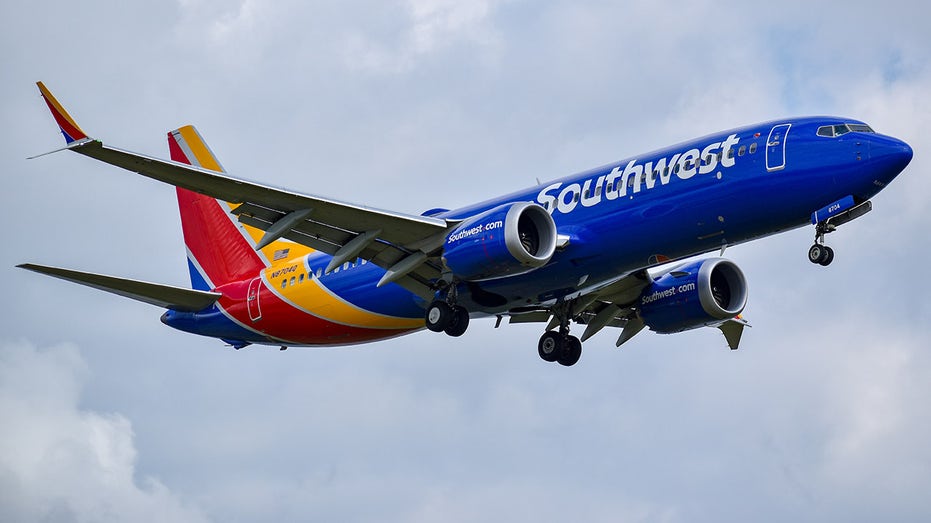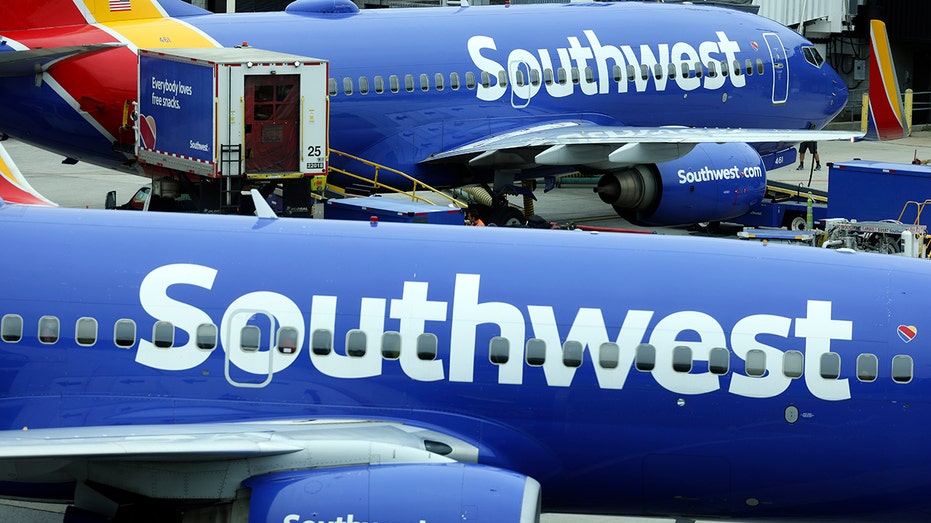Airlines face unexpected safety issue in pandemic: More bird strikes
Major airlines warn 5G could cause ‘catastrophic’ disruptions
The Cow Guy Group founder Scott Shellady and Fidelity Investments VP John Gagliardi discuss why 5G is threatening flight delays on ‘The Claman Countdown.’
Airlines are contending with an unexpected consequence of the pandemic: a rising rate in bird collisions.
Called "bird strikes" in the industry, such collisions are rare, but potentially dangerous. A flock of birds crippled both engines of the jet that Chesley "Sully" Sullenberger safely ditched in the Hudson River in 2009. Most collisions are less catastrophic, but airports and pilots train extensively to avoid them.
Airport executives, safety agencies and wildlife biologists blame quiet airports over the past two years for the rising rate of strikes. Airports handled many fewer flights, and in some cases, smaller fields weren’t used at all for long stretches. Birds moved in, nesting atop parked aircraft, inside engines and on unused gear like passenger bridges and boarding stairs.
AMERICAN AIRLINES FLIGHT ATTENDANT ACCUSED OF VIOLATING MASK POLICY CAUGHT IN PHOTO
Geese have been a problem at Portland International Airport in Oregon. Seagulls flocked to Rome-Fiumicino Airport. Black kites are a new hazard for pilots taking off and landing in Bangalore.
"There has been a significant increase in risk," said Phil Mountain, director of U.K.-based Birdstrike Management Ltd., which advises airlines and airports on mitigating wildlife risks. Aviation and wildlife officials around the world have documented or modeled sometimes-steep increases in incident rates, though data is often collected differently country by country, making it difficult to put a figure on the issue at a global level.
A Southwest airlines 737 max 8 landing at Ronald Regan National Airport(DCA) Arlington, Virginia, USANovember 8th, 2018Plane-Boeing 737 Max 8Registration-n8704qAirport- DCAPhoto Credit- Domonic Evaninia (iStock / iStock) Aviation industry officials haven’t seen an increase in damaging accidents despite the rising rate of collisions. In the U.S., though, officials noted a substantial rise in the number of bigger bird species involved in collisions. Bald eagles, whose numbers have grown in the U.S. overall, were involved in 44 strikes with aircraft last year, up from the previous record of 35 for each of 2020 and 2019, according to Richard Dolbeer, a wildlife adviser at the U.S. Agriculture Department. In October last year, an engine on a Spirit Airlines Inc. flight caught fire after it ingested a bald eagle during a takeoff from Atlantic City International Airport, according to Federal Aviation Administration records. The flight was aborted, and passengers evacuated via slides. The strike caused major damage to the engine’s fan blades. SOUTHWEST AIRLINES WILL RESUME SERVING ALCOHOLIC DRINKS THIS MONTH Airports were already attractive for certain wildlife because of their large green spaces, said Marta Giordano, an ornithologist at the French Civil Aviation Authority. She co-authored a safety advisory published in July 2020 on handling the rise in bird strikes for European airports. "The fact that they were quiet made them even more attractive," she said. The increased rate of collisions has been more notable in Europe, where a hodgepodge of national travel bans have restricted intercontinental flying much more severely than in the U.S. In the first quarter of 2021, the rate of strikes in Europe jumped 205% compared with the same quarter in 2020, according to Europe’s counterpart to the FAA, the European Union Aviation Safety Agency. For the third quarter of last year, the latest period for which data is available, the number of bird strikes was up more than 18% from the same quarter in 2019, at 240.8 strikes per million flights. "The challenges have been almost directly in proportion to the level of activity," said John Franklin, head of safety promotion at EASA. The drop-off in air traffic also led many airports to cut back funding for wildlife mitigation measures, according to aviation officials and bird-mitigation experts. In the U.S., bird-strike rates rose sharply early in the pandemic. As domestic traffic largely resumed across the country, rates have fallen back to historical levels, according to data modeling by academics and wildlife specialists at the Agriculture Department. The model found that strike rates increased by as much as 17.5% across a sample of U.S. airports between April 2020 and October of the same year. WINTER STORM THREAT LEADS US AIRLINES TO CANCEL THOUSANDS OF FLIGHTS They returned to historical levels by that winter. The model showed a 41% increase in excess strikes reported in June 2020, at the peak of the pandemic’s impact on aircraft movements in the U.S. Geese posed a problem in Portland International Airport. Gaggles resided on properties surrounding the airport, said Nick Atwell, senior wildlife manager for the Port of Portland and chairman of Bird Strike Committee USA, a volunteer group of wildlife specialists who advocate for measures to reduce bird-strike risk. BALTIMORE, MARYLAND – OCTOBER 11: A Southwest Airlines airplane taxies from a gate at Baltimore Washington International Thurgood Marshall Airport on October 11, 2021 in Baltimore, Maryland. (Photo by Kevin Dietsch/Getty Images) (Photo by Kevin Dietsch/Getty Images / Getty Images) The rate of recorded bird strikes at the airport from April through June 2020 rose 122%, according to FAA data compiled by The Wall Street Journal. Bird strikes—even nonserious ones—can be costly for airlines. Most require a review for any damage by qualified maintenance teams, which can lead to delays or canceled flights. On April 12, 2020, a Delta Air Lines Inc. jet at San Francisco International Airport started losing thrust in its second engine, causing the aircraft to return to the gate. The flight was canceled and the aircraft was temporarily removed from service. The airline later found a bird had been ingested by the turbine. CLICK HERE TO READ MORE ON FOX BUSINESS Rome-Fiumicino Airport recorded a 130% spike in the rate of bird collisions in the 12 months from March 2020, according to data collected by the airport and compiled from the Italian Bird Strike Index, which records wildlife collisions in Italy and is managed by the local civil aviation authority. Across Italy’s 45 airports, the rate per 10,000 flights rose by 42%. Seagulls have posed a particular problem at Italy’s coastal airports. Rome’s airport has deployed a range of measures to make it less attractive, including keeping grass cut short and water covered up, according to Marco Pellegrino, head of airside operations at Aeroporti di Roma SpA. A dedicated bird-control unit employs some 120 air cannons, sound cannons, hand-held lasers and vehicles equipped with sound systems to help keep wildlife from the runway. Birds are seen as workers in protective suits clean the contaminated beach after an oil spill in Newport Beach, Calif., on Wednesday, Oct. 6, 2021. (AP Photo/Ringo H.W. Chiu) (AP Newsroom) Bangalore International Airport, meanwhile, recorded a 33% increase in movements of potentially hazardous birds. Regular food sources around the airport dried up during Covid-19 lockdowns, according to Haridasan Vadakkotil, a manager at the airport’s strike hazard management team. The airport has seen a particular rise in the number of black kites. The birds use thermal winds generated from runways to gain flight. "Birds quickly get adapted to the environment," he said, "and it’s difficult to break their habit and keep them away." Source: Read Full Article



